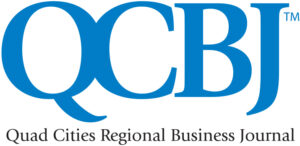
Quad Cities International Airport (QCIA) reported a record-breaking number of tower movements in May going back to at least 2017, according to information from the airport.
More than 4,200 tower movements were recorded last month, exceeding the most recent high of 3,655 in May 2019. A tower movement is defined as any time a plane takes off or lands.
In a news release, QCIA leaders said the number of tower movements, regardless of the size of the aircraft, impacts many areas of an airport, the most essential being federal funding. Essentially, the busier the airport, the better the opportunity to receive grant funding from the Federal Aviation Administration which helps buy equipment, support airport maintenance and improvement projects, and more.
“Despite the challenges regional airports are facing growing commercial travel, the general aviation community remains a beacon of light,” Ashleigh Davis, the QCIA’s public relations and marketing manager, said in the release. “Credit for this milestone really belongs to the flight schools and instructors based at MLI, and our thriving general aviation community.”
“Class C is ideal for flight schools and student pilots because it provides the opportunity to learn to listen to the tower as well as communicate with it, without the heavy congestion of busier Airports,” Ms. Davis added.
The QCIA continues to rebound from the COVID-19 pandemic that severely impacted air travel. Planes out of the Quad Cities are full, which is what airlines want to see when making decisions about where to add flights, given their constrained resources, the QCIA said. The stabilization of commercial air travel also contributes to tower movements.
According to the release, the QCIA is designated as Class C airspace. Classification is generally based on four factors: traffic volume, type of operations, required level of safety, and national/public interest. O’Hare International Airport, for comparison, is designated as Class B. There are six classifications in the U.S. for controlled airspace.
Airspace classification plays a role in attracting new or expanded commercial air service. It not only communicates anticipated traffic at a given airport but also what size aircraft is common or manageable, which helps with future planning. In addition, airspace classification directly impacts air traffic controllers’ earning potential – the higher the classification, the higher the skill level required, which yields higher compensation.




